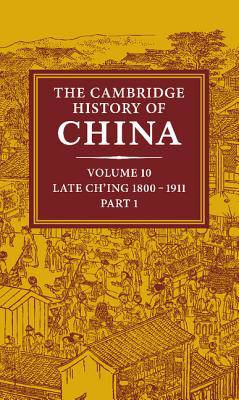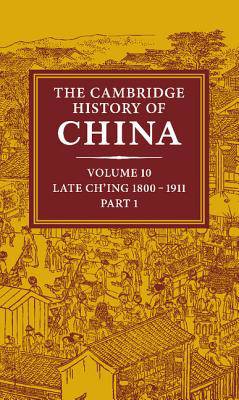
- Afhalen na 1 uur in een winkel met voorraad
- Gratis thuislevering in België vanaf € 30
- Ruim aanbod met 7 miljoen producten
- Afhalen na 1 uur in een winkel met voorraad
- Gratis thuislevering in België vanaf € 30
- Ruim aanbod met 7 miljoen producten
Zoeken
€ 256,45
+ 512 punten
Omschrijving
This is the first of two volumes in this major Cambridge history dealing with the decline of the Ch'ing empire. It opens with a survey of the Ch'ing empire in China and Inner Asia at its height, in about 1800. Contributors study the complex interplay of foreign invasion, domestic rebellion and Ch'ing decline and restoration. Special reference is made to the Peking administration, the Canton trade and the early treaty system, the Taiping, Nien and other rebellions, and the dynasty's survival in uneasy cooperation with the British, Russian, French, American and other invaders. Each chapter is written by a specialist from the international community of sinological scholars. No knowledge of Chinese is necessary; for readers with Chinese, proper names and terms are identified with their characters in the glossary, and full references to Chinese, Japanese and other works are given in the bibliographies. Numerous maps illustrate the text, and there are a bibliographical essays describing the source materials on which each author's account is based.
Specificaties
Betrokkenen
- Auteur(s):
- Uitgeverij:
Inhoud
- Aantal bladzijden:
- 730
- Taal:
- Engels
- Reeks:
- Reeksnummer:
- nr. 10
Eigenschappen
- Productcode (EAN):
- 9780521214476
- Verschijningsdatum:
- 5/06/1978
- Uitvoering:
- Hardcover
- Formaat:
- Genaaid
- Afmetingen:
- 164 mm x 230 mm
- Gewicht:
- 1170 g

Alleen bij Standaard Boekhandel
+ 512 punten op je klantenkaart van Standaard Boekhandel
Beoordelingen
We publiceren alleen reviews die voldoen aan de voorwaarden voor reviews. Bekijk onze voorwaarden voor reviews.











